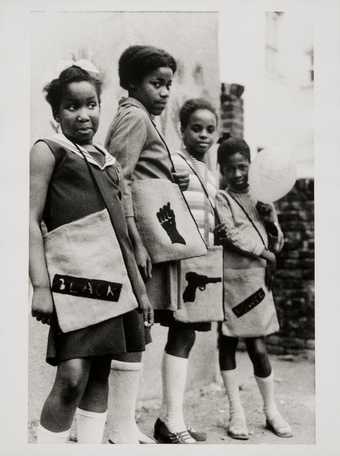
Neil Kenlock MBE, Black Panther school bags 1970, printed 2010. Tate. © reserved.
Ideas into Action 1965–1980
13 rooms in Modern and Contemporary British Art
Artists begin working with ideas and images that can be rapidly transmitted in an increasingly interconnected world, addressing political and social issues
The late 1960s is seen by many as a high point in cultural experimentation and revolutionary ideals. Artists begin developing art that is more concerned with ideas than aesthetics. They also want to democratise how art is produced, shared and experienced. These artists do not think of their work as something to be owned but instead as a way to exchange ideas. They emphasise process: how and why you make something is more important than what you produce. They often move out of their studios to work in the streets and don’t use traditional art materials. It seems to be an art of endless possibility, as artists embrace new materials, processes and actions.
As the 1960s becomes the 1970s, artists in Britain increasingly use these strategies to address social issues. These include: the personal and political injustices identified by the feminist movement, the poor condition of social housing, the legacy of British colonialism, experiences of racism, and escalating global political tension, including war in Vietnam.
Technological developments, exemplified by the 1969 moon landing of Apollo 11, also mark this era. Another of the most profound legacies of the time is the women’s liberation movement. Soon after the UK joins the European Communities in 1973, the global oil crisis contributes to economic recession and severe inflation. The country sees nationwide strikes by workers demanding that their pay keeps up with the rising cost of living. Many artists respond to this crisis that drives people to gather and protest.
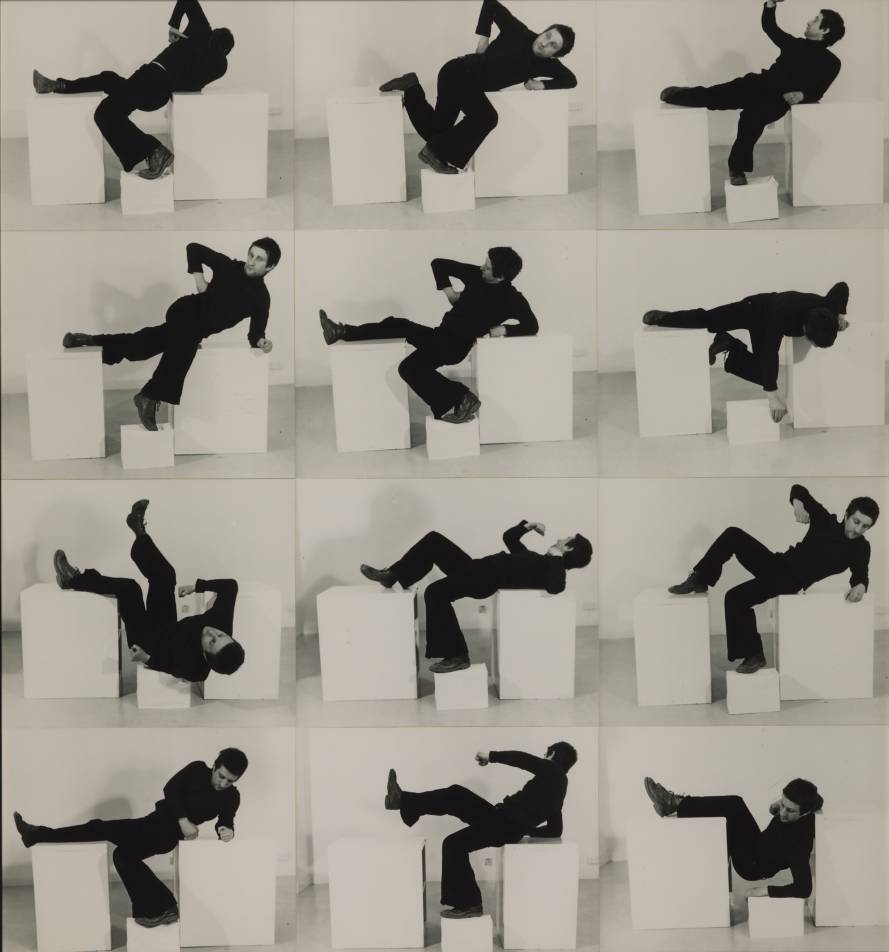
Bruce McLean, Pose Work for Plinths I 1971
Bruce McLean first made this work as a performance. He repeated the poses from his performance for these photographs. They are an ironic and humorous commentary on Henry Moore’s monumental reclining sculptures, which McLean found pompous. The plinth in McLean’s work is also a pointed reference to another established British sculptor, Anthony Caro. Caro strongly rejected the use of plinths in sculpture. He taught at St Martin’s School of Art when McLean was a student there (1963–6).
Gallery label, September 2023
1/22
artworks in Ideas into Action
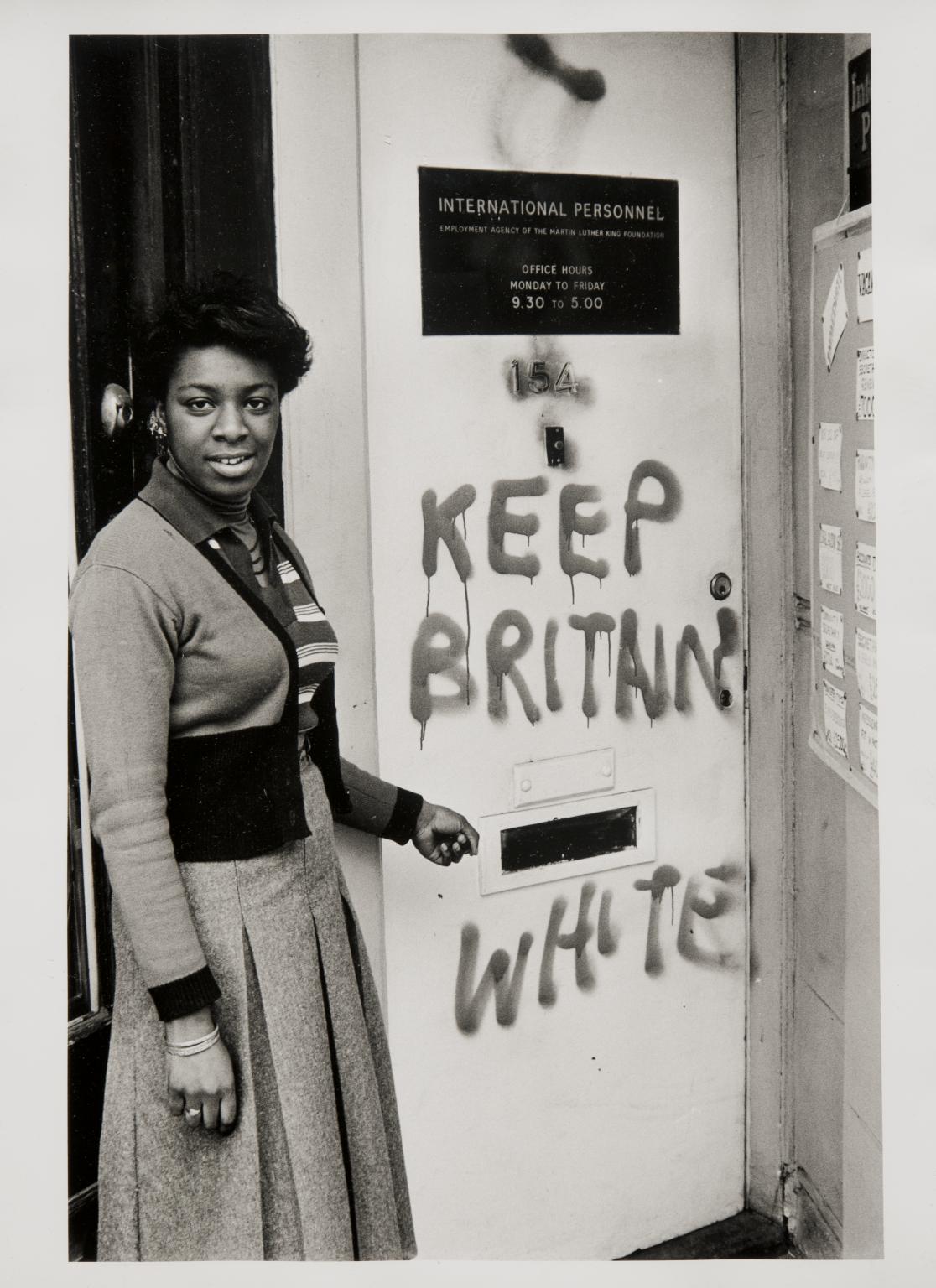
Neil Kenlock MBE, ‘Keep Britain white’ graffiti, Balham 1972, printed 2010
Neil Kenlock worked for commercial studios before becoming a freelance photographer. He joined the Black Panther movement, which worked to combat racial oppression, police brutality and discrimination. From the movement’s early days in the UK, Kenlock documented its activities and demonstrations. On display here is a portrait of four young girls posing with their customised bags, embroidered with Black Panther emblems. For Kenlock, the photograph ‘Keep Britain White’ Graffiti, Balham is one of his most important images. He said, ‘It reminds people of what life was like for new immigrants in the UK.
Gallery label, September 2023
2/22
artworks in Ideas into Action
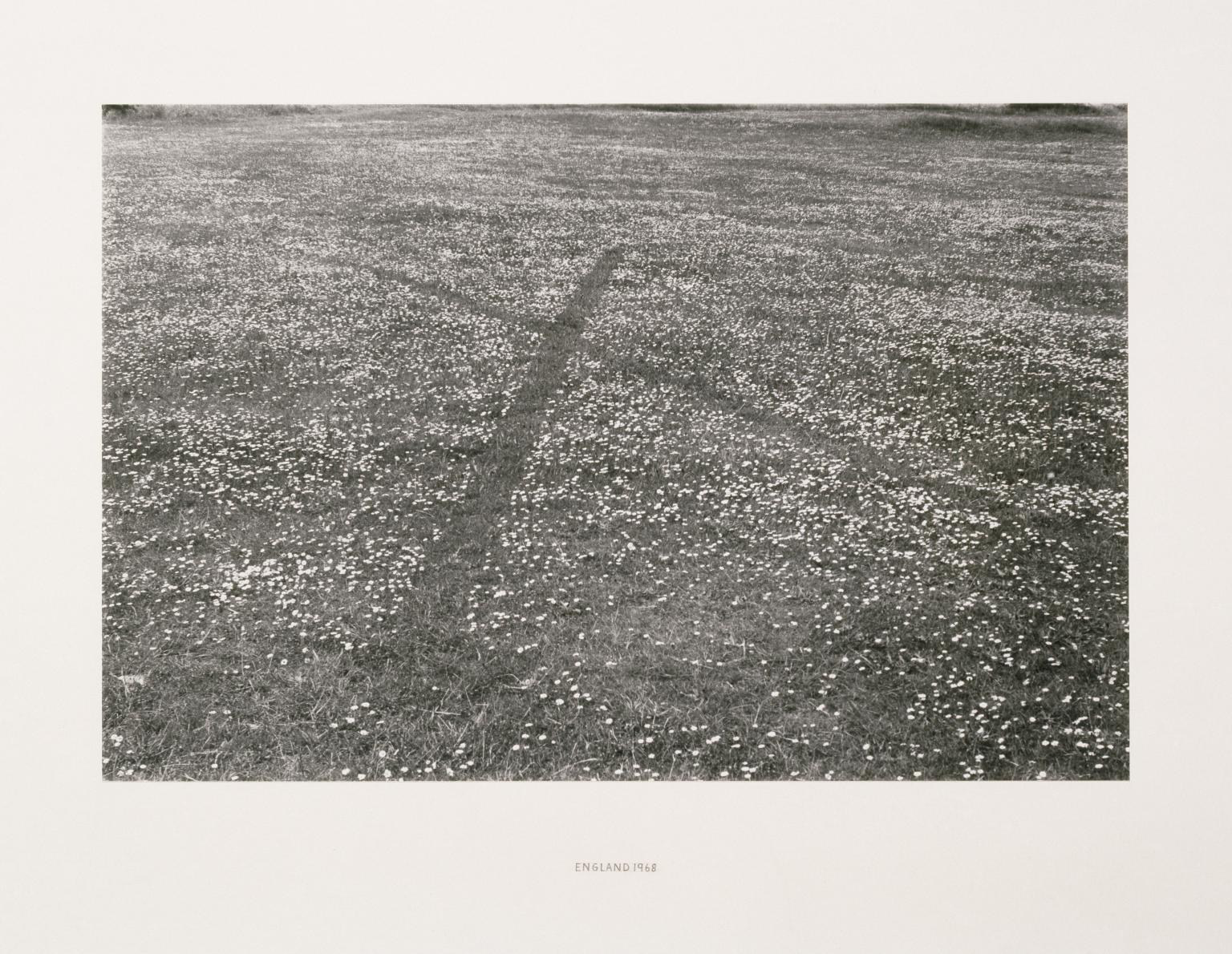
Richard Long CBE, England 1968 1968
Richard Long leaves the studio to create work in outdoor settings. During walks he subtly marks his presence. In the works represented here, he records a temporary impression on turf and picks daisies along two lines to form an ‘X’. These interventions won’t last, but are made permanent in the form of photographs. ‘These works are of the place, they are a rearrangement of it and in time will be reabsorbed by it. I hope to make work for the land, not against it,’ he said.
Gallery label, September 2023
3/22
artworks in Ideas into Action
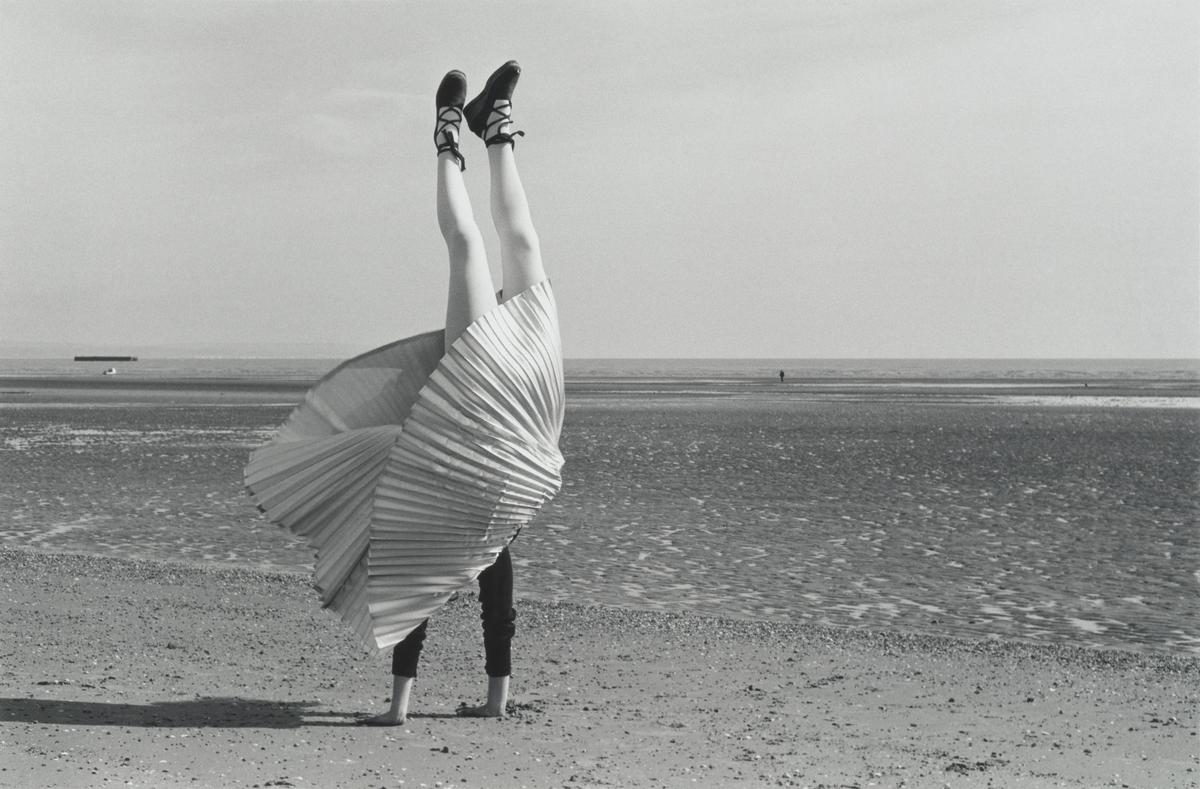
Rose Finn-Kelcey, The Restless Image: a discrepancy between the seen position and the felt position 1975
This photograph was inspired by a snapshot of Rose Finn-Kelcey’s mother. The artist revisited a beach near Dungeness, Kent, where her family had gone when she was a child. There she took photographs of herself performing handstands. This image appears to capture an exuberant, impulsive gesture. But the work’s subtitle suggests the difference between the experience and what is visible to the spectator. The artist’s later work continued to explore the inconsistency between inner life and external perception.
Gallery label, September 2023
4/22
artworks in Ideas into Action

Stephen Willats, Living with Practical Realities 1978
Stephen Willats aimed to explore the realities of living in a British tower block. The work centres on Mrs Moran, an elderly woman who lived at Skeffington Court in Hayes, West London. Willats photographed and interviewed Mrs Moran over the course of six months. The text in the work is based on these interviews. In his composition, Willats highlights the physical, social and economic constraints that she faced. Each panel also features a question. These invite the viewer to participate directly in Mrs Moran’s lived experiences.
Gallery label, September 2023
5/22
artworks in Ideas into Action

Mary Kelly, Post-Partum Document. Documentation III: Analysed Markings And Diary Perspective Schema (Experimentum Mentis III: Weaning from the Dyad) 1975
These panels form one part of a much larger work that documents the relationship between Kelly and her son over a period of six years. Here, she takes drawings and scribbles done in chalk or crayon by her son and overlays them with typewritten reflections on conversations with him as he begins nursery school. Drawing on feminist thinking of the time she explores the contradictions between working as an artist and her role as a mother – between ‘my lived experience and my analysis of that experience’.
Gallery label, November 2018
6/22
artworks in Ideas into Action
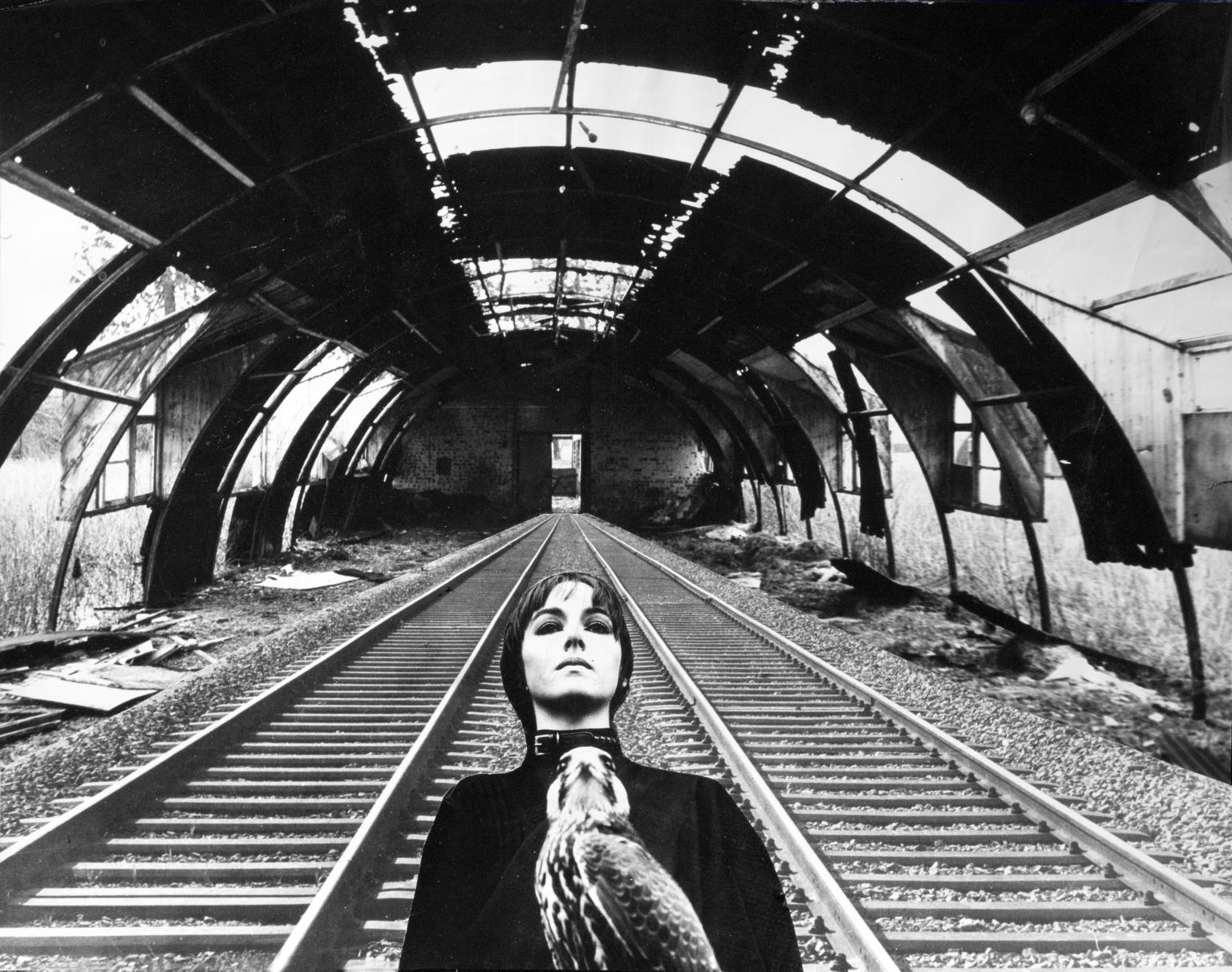
Penny Slinger, End of the Line 2 1977
This is one of five photo-collages in Tate’s collection – Bird in the Hand, End of the Line 2, Perspective, Diamond Sutra / Deliverance and Dust to Dust (Tate T15174–T15178) – from a series originally published in book form in 1977 as An Exorcism by Villiers Publications for Empty-Eye. For An Exorcism, Slinger staged her own mises-en-scène in the then abandoned Lilford Hall near Peterborough in Northamptonshire, producing performative self-portraits over the course of seven years in the manner of early surrealists such as Claude Cahun, Hannah Höch and Dorothea Behrens. In these she employed the tools of the surrealist movement to explore the feminist psyche, delving into the unconscious and subconscious in the pursuit of the psychic integration which she understood to be the cornerstone of self-liberation. As well as examining the idea of the self, the series looks at liberation, sex, desire, the dream realm and memory. It was created in the tradition of the classical ‘photo-romance’, taking inspiration from works by Max Ernst such as La femme 100 têtes 1929 and Une semaine de bonté 1934 (as a student at the Royal College of Art, London in the late 1960s, Slinger had written her thesis on Ernst). The theatricality of the staged scenes may stem from the fact that Slinger was also involved in the dramatic arts with the all-women theatre troupe Holocaust in 1971, as well as appearing in the avant-garde feature film The Other Side of the Underneath (1972), directed by Jane Arden, and working on the production and design for Pablo Picasso’s play The Four Little Girls at the Open Space Theatre, London in 1971.
7/22
artworks in Ideas into Action

Penny Slinger, Perspective 1970–7
This is one of five photo-collages in Tate’s collection – Bird in the Hand, End of the Line 2, Perspective, Diamond Sutra / Deliverance and Dust to Dust (Tate T15174–T15178) – from a series originally published in book form in 1977 as An Exorcism by Villiers Publications for Empty-Eye. For An Exorcism, Slinger staged her own mises-en-scène in the then abandoned Lilford Hall near Peterborough in Northamptonshire, producing performative self-portraits over the course of seven years in the manner of early surrealists such as Claude Cahun, Hannah Höch and Dorothea Behrens. In these she employed the tools of the surrealist movement to explore the feminist psyche, delving into the unconscious and subconscious in the pursuit of the psychic integration which she understood to be the cornerstone of self-liberation. As well as examining the idea of the self, the series looks at liberation, sex, desire, the dream realm and memory. It was created in the tradition of the classical ‘photo-romance’, taking inspiration from works by Max Ernst such as La femme 100 têtes 1929 and Une semaine de bonté 1934 (as a student at the Royal College of Art, London in the late 1960s, Slinger had written her thesis on Ernst). The theatricality of the staged scenes may stem from the fact that Slinger was also involved in the dramatic arts with the all-women theatre troupe Holocaust in 1971, as well as appearing in the avant-garde feature film The Other Side of the Underneath (1972), directed by Jane Arden, and working on the production and design for Pablo Picasso’s play The Four Little Girls at the Open Space Theatre, London in 1971.
8/22
artworks in Ideas into Action
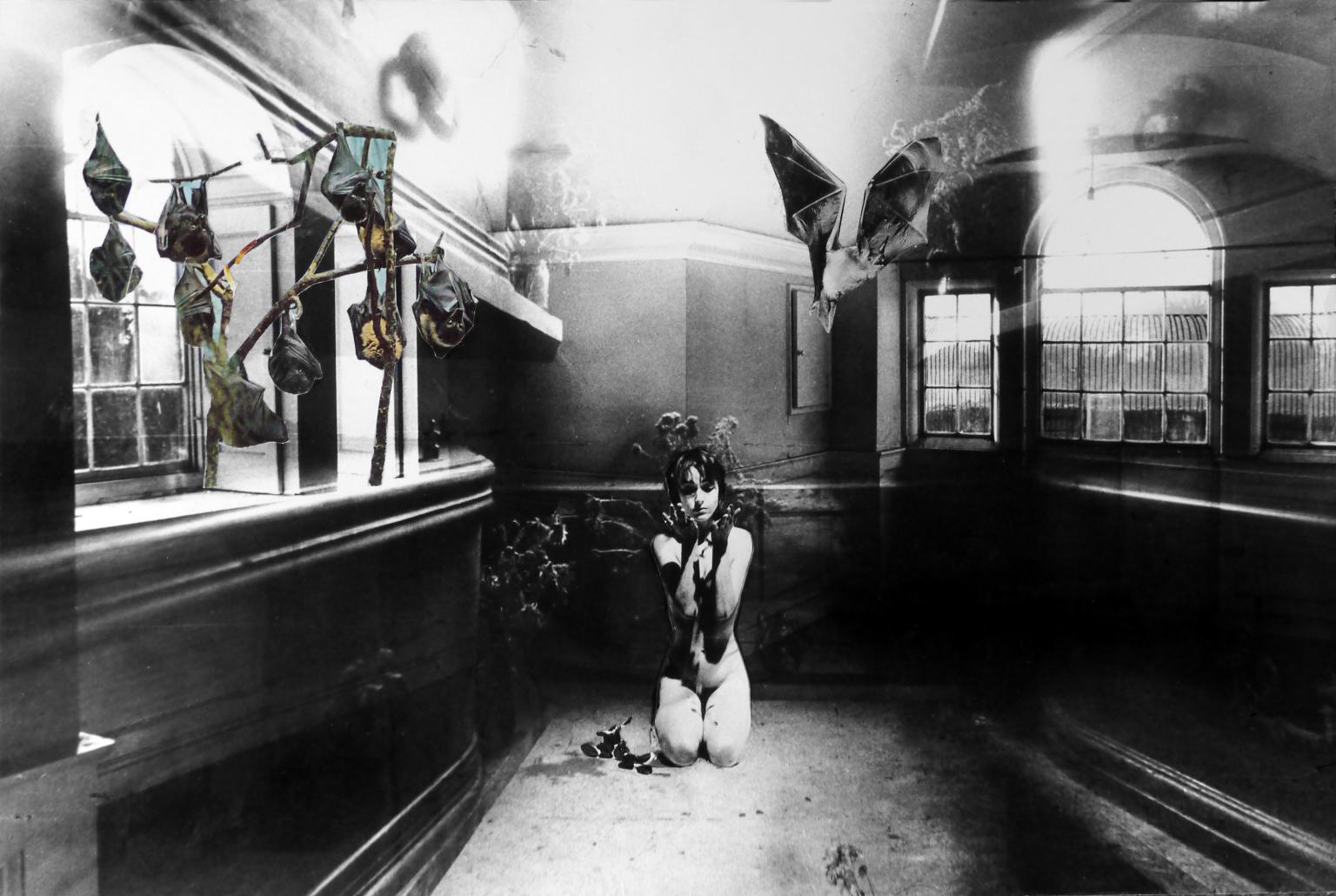
Penny Slinger, Dust to Dust 1970–7
This is one of five photo-collages in Tate’s collection – Bird in the Hand, End of the Line 2, Perspective, Diamond Sutra / Deliverance and Dust to Dust (Tate T15174–T15178) – from a series originally published in book form in 1977 as An Exorcism by Villiers Publications for Empty-Eye. For An Exorcism, Slinger staged her own mises-en-scène in the then abandoned Lilford Hall near Peterborough in Northamptonshire, producing performative self-portraits over the course of seven years in the manner of early surrealists such as Claude Cahun, Hannah Höch and Dorothea Behrens. In these she employed the tools of the surrealist movement to explore the feminist psyche, delving into the unconscious and subconscious in the pursuit of the psychic integration which she understood to be the cornerstone of self-liberation. As well as examining the idea of the self, the series looks at liberation, sex, desire, the dream realm and memory. It was created in the tradition of the classical ‘photo-romance’, taking inspiration from works by Max Ernst such as La femme 100 têtes 1929 and Une semaine de bonté 1934 (as a student at the Royal College of Art, London in the late 1960s, Slinger had written her thesis on Ernst). The theatricality of the staged scenes may stem from the fact that Slinger was also involved in the dramatic arts with the all-women theatre troupe Holocaust in 1971, as well as appearing in the avant-garde feature film The Other Side of the Underneath (1972), directed by Jane Arden, and working on the production and design for Pablo Picasso’s play The Four Little Girls at the Open Space Theatre, London in 1971.
9/22
artworks in Ideas into Action
Ian Burn, Blue Reflex 1966
Ian Burn wanted to leave no trace of how he made this work, and to give it a uniform finish. To achieve this, he smoothed ply-board, before applying lacquer usually used on car paint with an airgun. Burn created a work that reflects spectators and prompts our awareness of the act of looking. In doing so, he aimed to challenge the belief that painting should stand alone and be removed from everyday concerns. This was a dominant view championed by the influential US art critic Clement Greenberg.
Gallery label, September 2023
10/22
artworks in Ideas into Action

Sir Michael Craig-Martin, Six Foot Balance with Four Pounds of Paper 1970
A four-pound lead weight and a stack of paper hang perfectly balanced at either end of a steel rod. At first glance, we might think it is just a single piece of paper. But approximately 42 sheets are fastened together, each depicting an identical image of the lead weight. By playing with our expectations of materials and weight, Michael Craig-Martin invites us to reconsider our initial visual perception. In his words, ‘art always involves looking at something familiar as though it were unfamiliar.’
Gallery label, August 2024
11/22
artworks in Ideas into Action
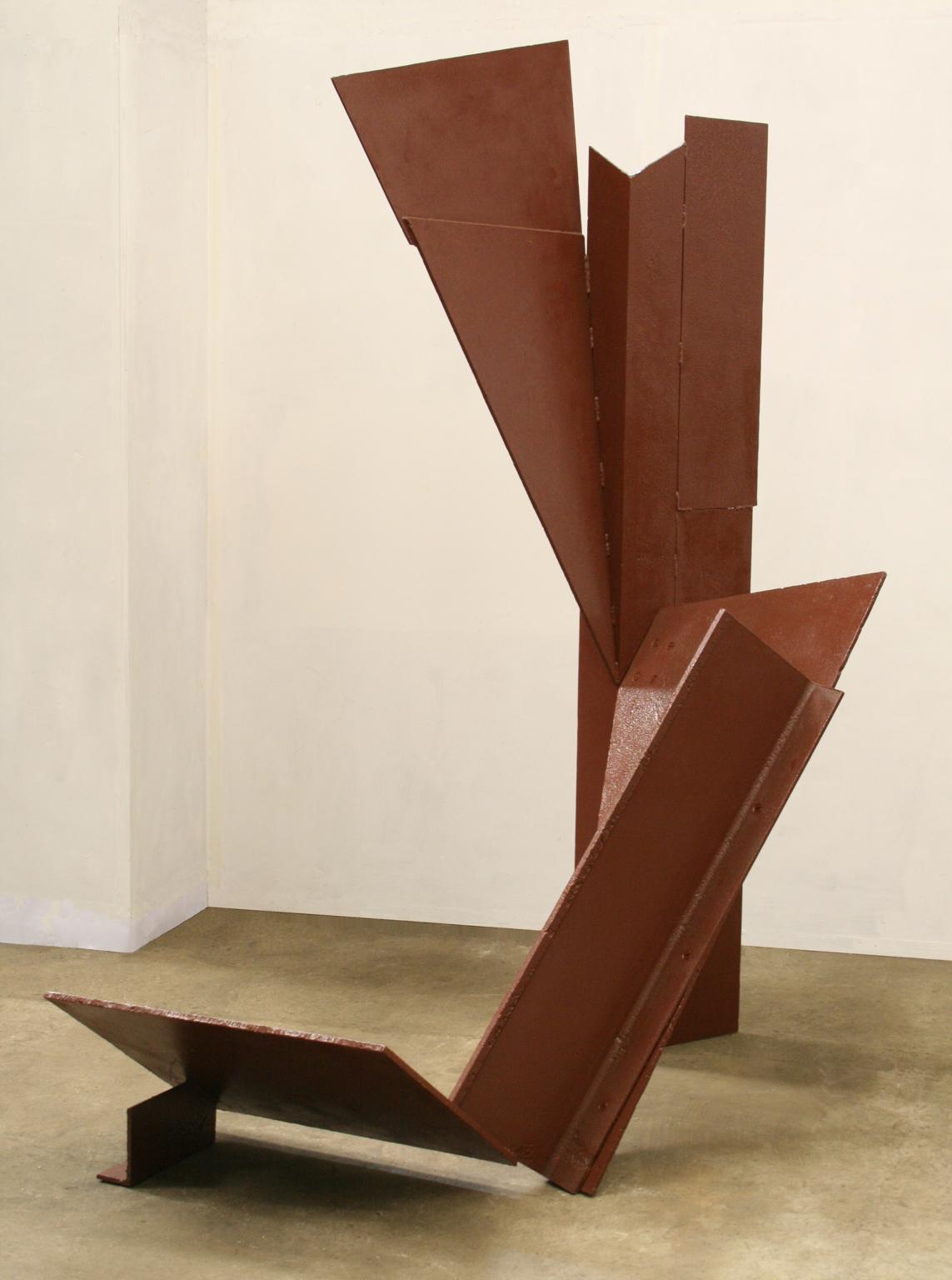
Katherine Gili, Vertical IV 1975
Vertical IV 1975 is a freestanding steel sculpture which has been zinc sprayed and painted brown. Standing over two metres high, it is constructed from flat pieces of steel, bolted and welded together. Rising from the ground at different angles, its primary components are three long planes of steel that visually cohere into an abstract form akin to an extended tree structure. The arrangement of the work, with its variously angled planes, invites the viewer to move around it, experiencing it in its changing form, depending on the viewing position.
12/22
artworks in Ideas into Action
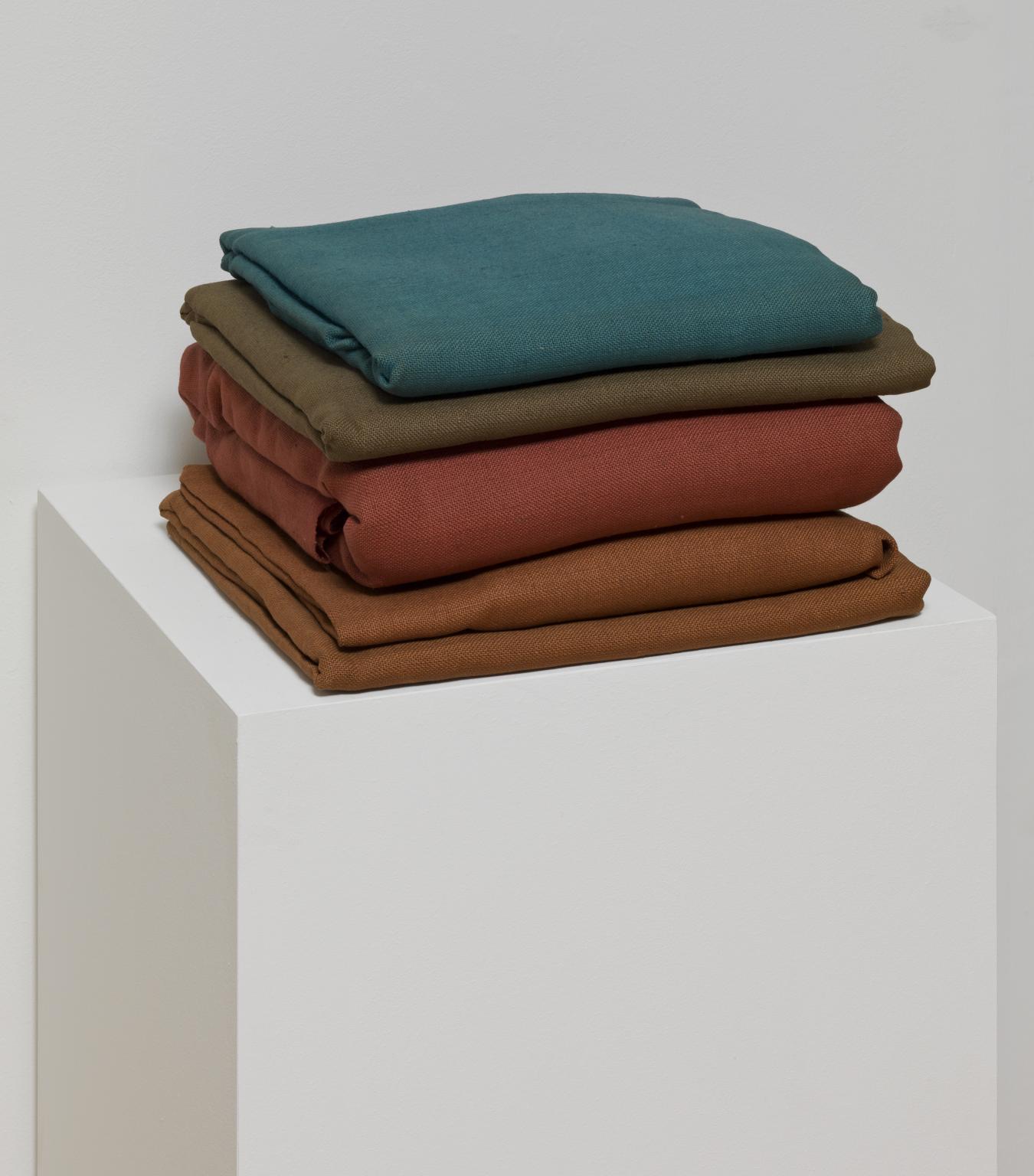
Barry Flanagan, pile 3 ‘68 1968, reconstructed 1985
13/22
artworks in Ideas into Action
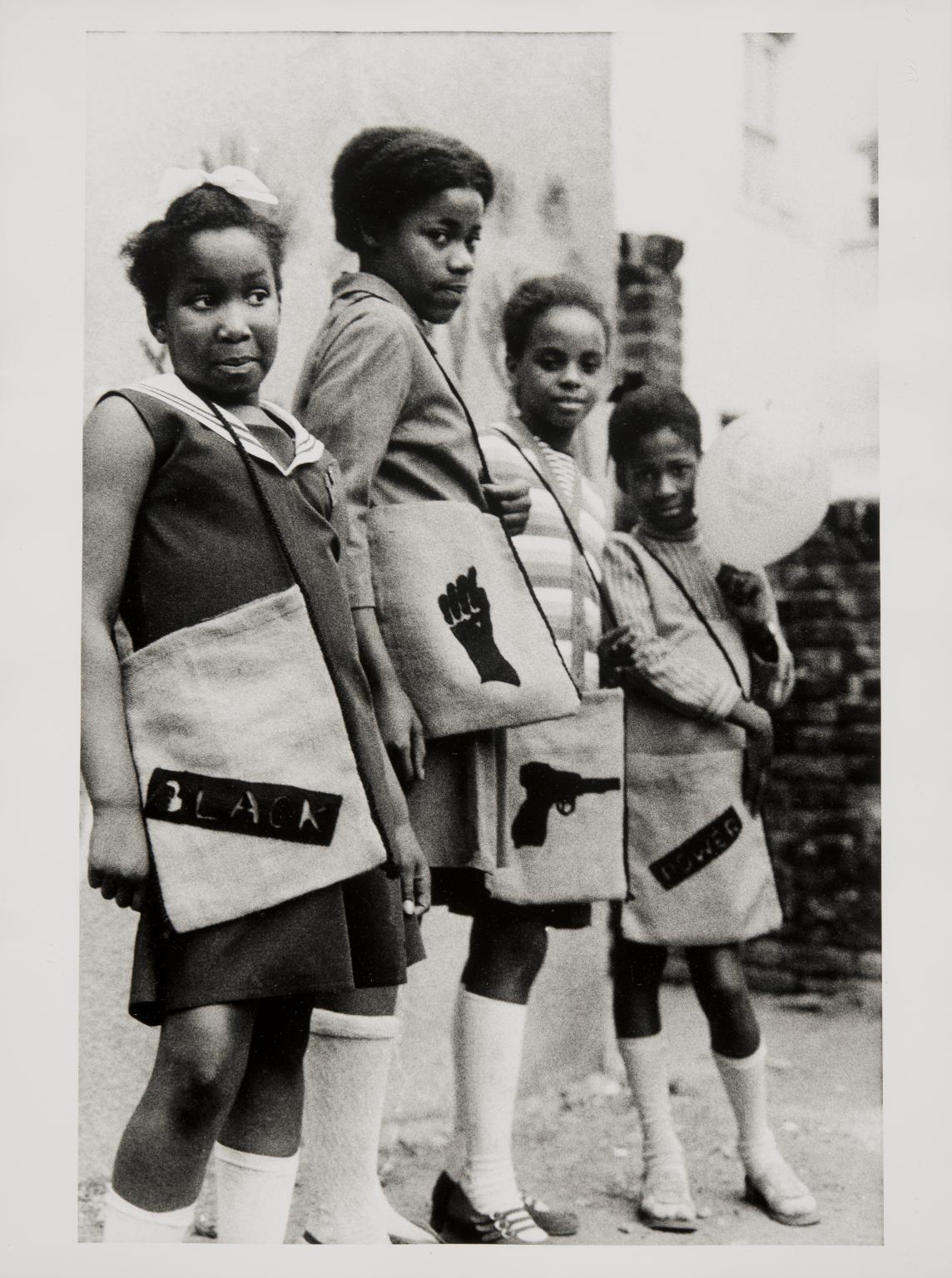
Neil Kenlock MBE, Black Panther school bags 1970, printed 2010
Neil Kenlock worked for commercial studios before becoming a freelance photographer. He joined the Black Panther movement, which worked to combat racial oppression, police brutality and discrimination. From the movement’s early days in the UK, Kenlock documented its activities and demonstrations. On display here is a portrait of four young girls posing with their customised bags, embroidered with Black Panther emblems. For Kenlock, the photograph ‘Keep Britain White’ Graffiti, Balham is one of his most important images. He said, ‘It reminds people of what life was like for new immigrants in the UK.
Gallery label, September 2023
14/22
artworks in Ideas into Action
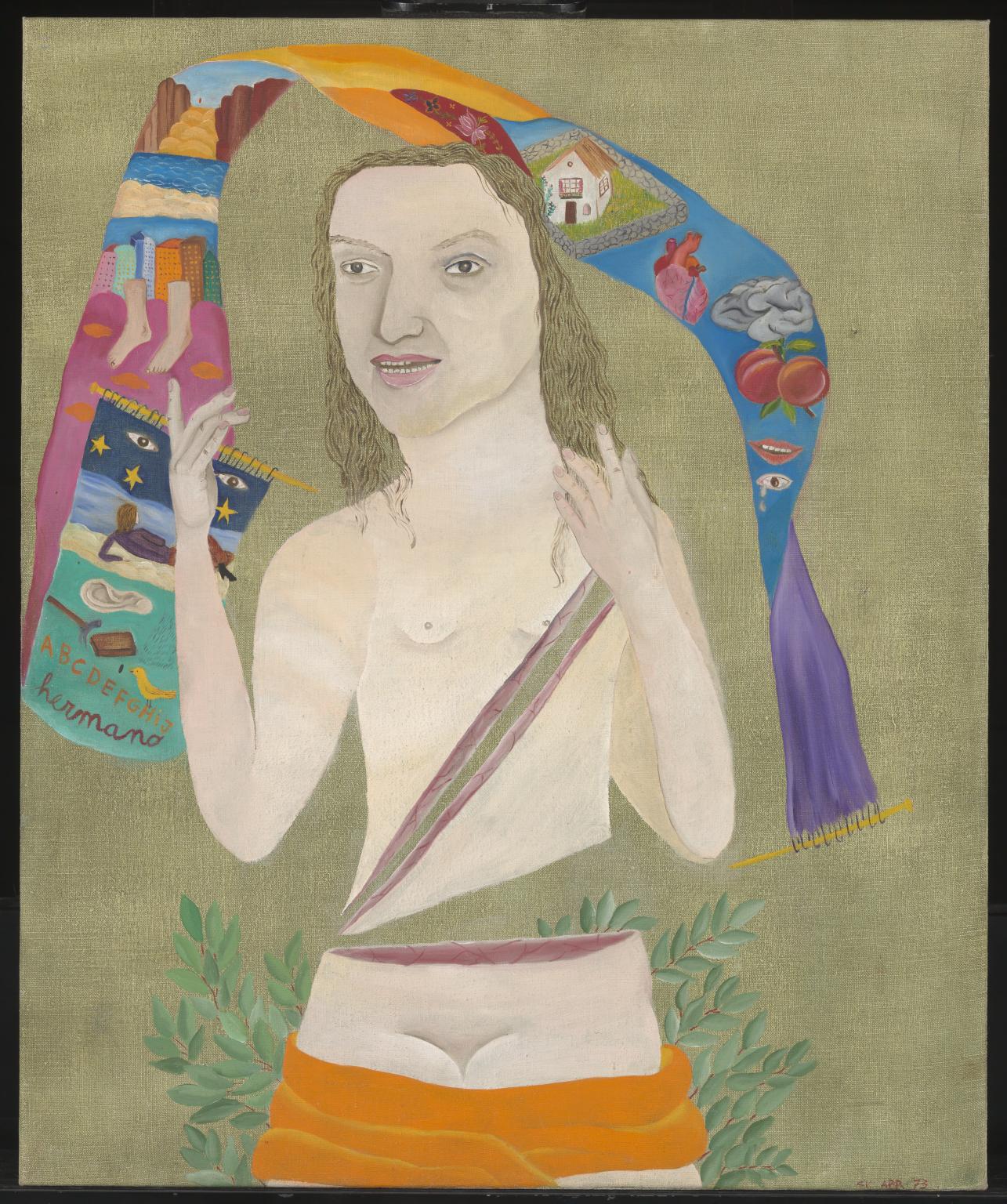
Cecilia Vicuña, Violeta Parra 1973
This painting is part of a series called Heroes of the Revolution. In 1952, singer and folklorist Violeta Parra embarked on a tour around rural Chile, recording and compiling folk music. She rescued a tradition that most Chileans had forgotten. This led to an artistic movement known as Nueva Canción Chilena (New Chilean Song). The painting commemorates Parra’s work and struggle before she took her own life in 1967. ‘My paintings are political in a personal way’, Vicuña has explained. ‘My canvases are born as representations of a socialist paradise where everything is possible’.
Gallery label, September 2023
15/22
artworks in Ideas into Action
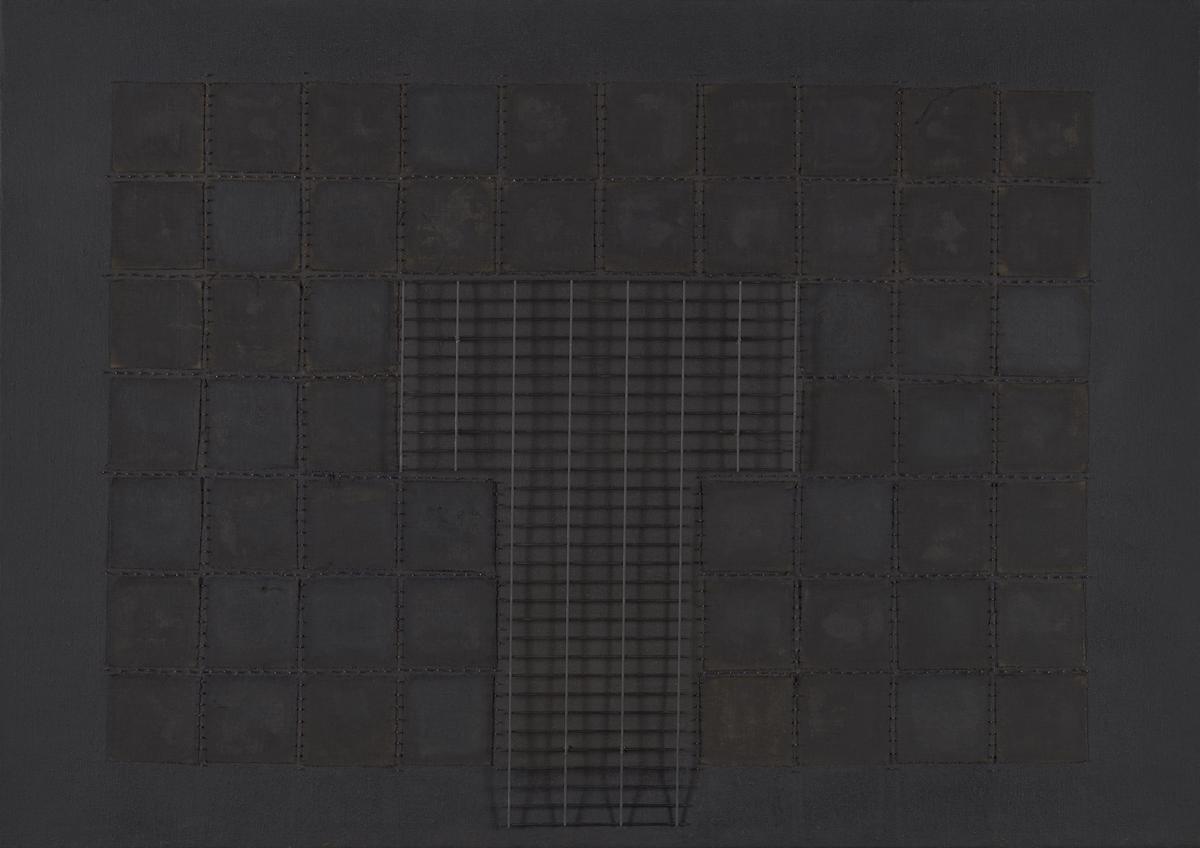
Donald Locke, Dageraad From the Air 1978–9
Dageraad was a sugar plantation. In 1763 it was the site of Guyana’s first rebellion of enslaved people. The painting evokes the plantation system that shaped Guyana’s history under Dutch and British colonial rule. The grid reflects the intervention on the land, sectioned by dykes and drainage canals. Donald Locke said: ‘In the Caribbean, the most dominant sociological event is the plantation system. I grew up at a time when the plantation system was still in existence. It dominated the sky; it dominated your life from beginning to end.’
Gallery label, September 2023
16/22
artworks in Ideas into Action
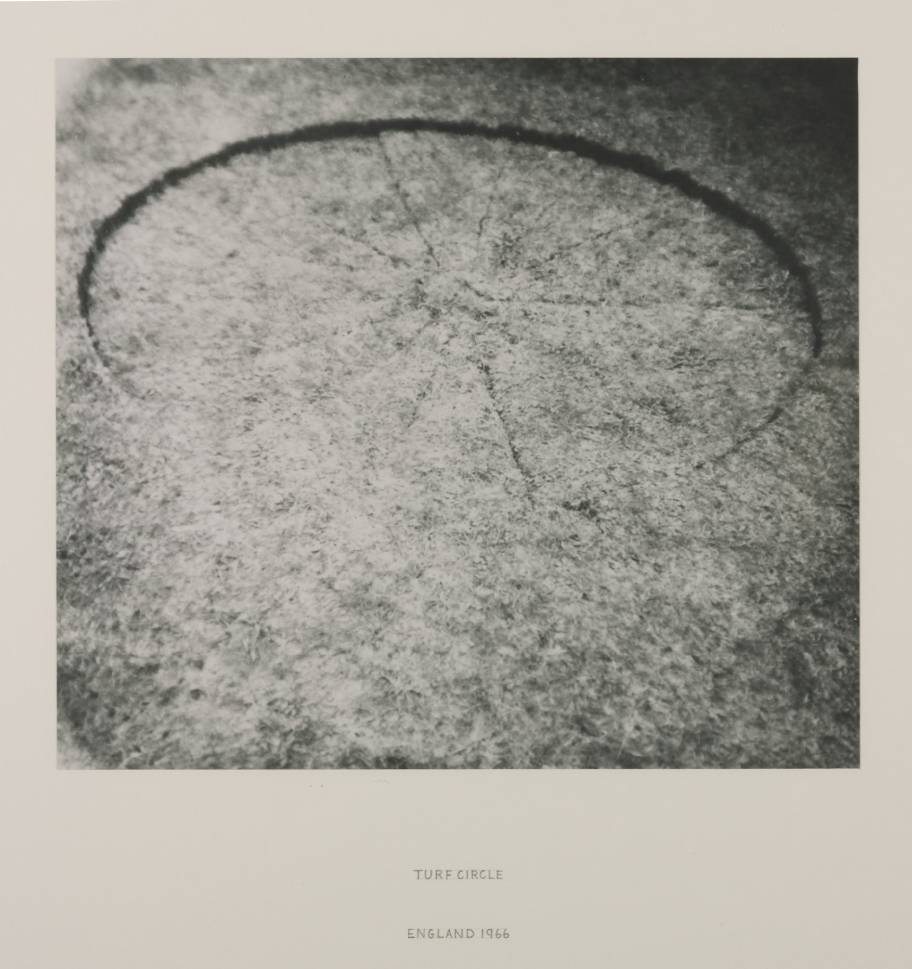
Richard Long CBE, Turf Circle 1966
Richard Long leaves the studio to create work in outdoor settings. During walks he subtly marks his presence. In the works represented here, he records a temporary impression on turf and picks daisies along two lines to form an ‘X’. These interventions won’t last, but are made permanent in the form of photographs. ‘These works are of the place, they are a rearrangement of it and in time will be reabsorbed by it. I hope to make work for the land, not against it,’ he said.
Gallery label, September 2023
17/22
artworks in Ideas into Action
Sir Horace Ové CBE, Darcus Howe Speaks at the Mangrove Demonstration 1970, printed 2023
On 9 August 1970, a march took place to protest the police harassment of Black communities, including at The Mangrove, a Caribbean restaurant in Notting Hill, London. Nine protesters were charged with incitement to riot. In these photographs, Horace Ové captures significant moments from the march and subsequent trial. All nine activists were eventually acquitted, signalling the first judicial acknowledgment of racial hatred within the Metropolitan Police. These photographs come from a body of work Ové made between 1967 and 1970 documenting key events in the British civil rights movement.
Gallery label, August 2024
18/22
artworks in Ideas into Action
Sir Horace Ové CBE, Barbara Beese at the Mangrove Demonstration 1970, printed 2023
On 9 August 1970, a march took place to protest the police harassment of Black communities, including at The Mangrove, a Caribbean restaurant in Notting Hill, London. Nine protesters were charged with incitement to riot. In these photographs, Horace Ové captures significant moments from the march and subsequent trial. All nine activists were eventually acquitted, signalling the first judicial acknowledgment of racial hatred within the Metropolitan Police. These photographs come from a body of work Ové made between 1967 and 1970 documenting key events in the British civil rights movement.
Gallery label, August 2024
19/22
artworks in Ideas into Action
Sir Horace Ové CBE, The Mangrove Nine at Court House 1970, printed 2023
On 9 August 1970, a march took place to protest the police harassment of Black communities, including at The Mangrove, a Caribbean restaurant in Notting Hill, London. Nine protesters were charged with incitement to riot. In these photographs, Horace Ové captures significant moments from the march and subsequent trial. All nine activists were eventually acquitted, signalling the first judicial acknowledgment of racial hatred within the Metropolitan Police. These photographs come from a body of work Ové made between 1967 and 1970 documenting key events in the British civil rights movement.
Gallery label, August 2024
20/22
artworks in Ideas into Action
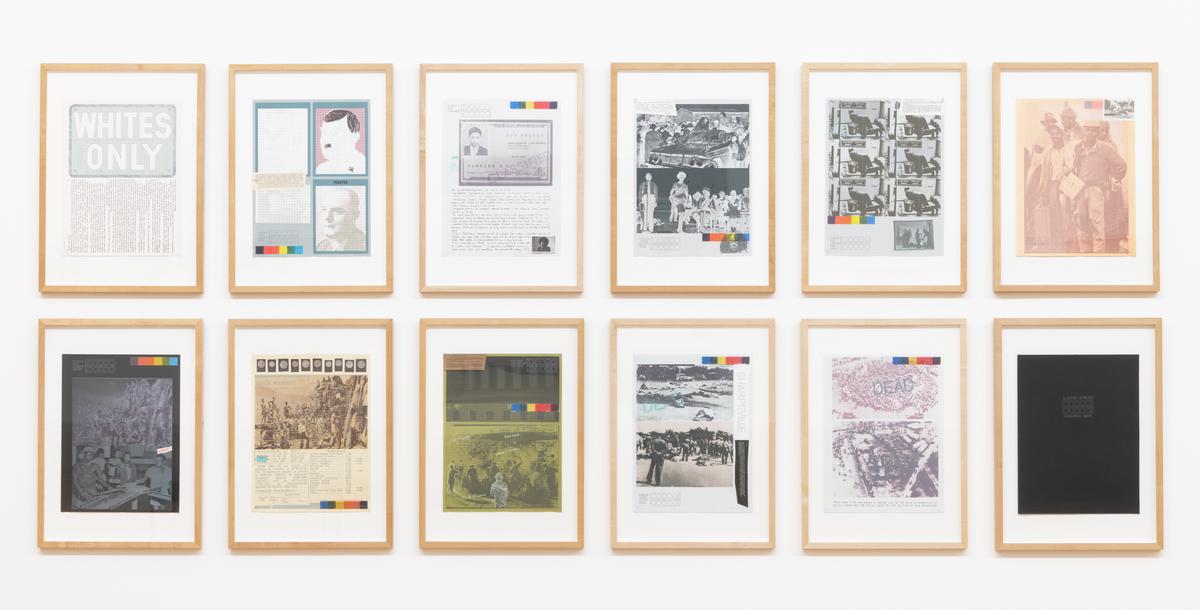
Gavin Jantjes, A South African Colouring Book 1974–5
Gavin Jantjes made these prints from a collage of photographs, news cuttings, drawings and text. Classifying citizens in terms of four ‘colours’ was central to South Africa’s racist Apartheid era, the main subject of this work. Whites Only is based on signs installed in public spaces across apartheid South Africa. Colour these People Dead includes images of the aftermath of the infamous Sharpeville Massacre, when 300 white police opened-fire on an unarmed Black crowd. Economic exploitation across industries, from the mines to the domestic space, is similarly addressed in the work. Jantjes also included his own identity pass, which classifies him as a ‘Cape Coloured’.
Gallery label, September 2023
21/22
artworks in Ideas into Action
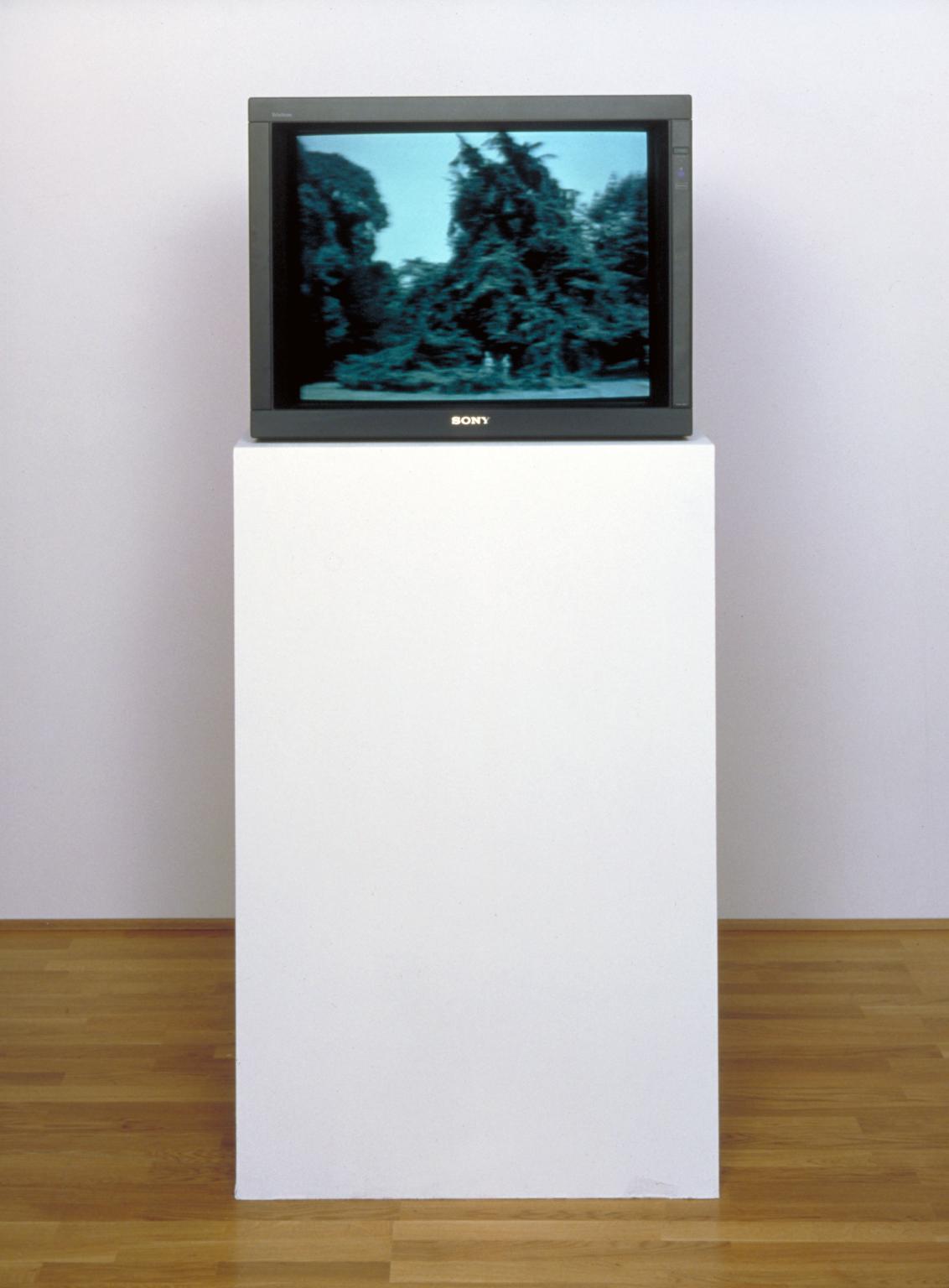
Gilbert & George, In the Bush 1972
Collaborative art duo Gilbert & George adopted the identity of ‘living sculptures’ in their art and daily lives. They started making films to reach a wider audience. In The Bush sees them in London’s Kew Gardens, strolling by a tree they thought was the wildest in the park. The soundtrack is from a BBC recording of bird sounds. Placing themselves in a cultivated landscape, but beside an untamed-looking tree, they seem to ask us to have a sceptical if detached eye when thinking about conventionally accepted appearances and behaviours.
Gallery label, September 2023
22/22
artworks in Ideas into Action
Art in this room

















Sorry, no image available
Sorry, no image available
Sorry, no image available


You've viewed 6/22 artworks
You've viewed 22/22 artworks
